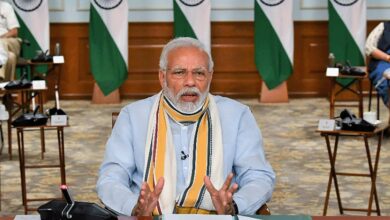viral news
-
Stories

India looking at strong economic revival: Anurag Thakur
India will have a strong economic India will have a strong economic revival thanks to its well-planned easing of lockdown,…
Read More » -
Stories

FDI growth story to ‘go well’ in 2021 too
FDI:The high growth story of foreign direct investments into India will “go well” in the new year too as there…
Read More » -
Stories

Israel heads to new elections as government collapses
Israel’s divided government collapsed early Wednesday, triggering the country’s fourth election in under two years and bringing an unprecedented threat…
Read More » -
Stories

590 passengers from UK land in Mumbai in three flights
As many as 590 passengers landed in Mumbai from the UK in three aircraft on Tuesday, a civic official said,…
Read More » -
Stories

Telangana cops crack the whip on app-based lenders
Cracking the whip on instant app-based lenders accused of harassing borrowers, the Telangana police on Tuesday said they have arrested…
Read More » -
Trends

Government Has Made HSRP Mandatory and Is Charging Fine, But Lacks Infra to Provide It | Why Modi Government Always Rush to Make Decisions Without Proper Preparation & Infra and Harass Common Public even in 2021
Government Has Made HSRP Mandatory and Is Charging Fine, But Lacks Infra to Provide It | Why Modi Government Always…
Read More » -
Trends

India stopping flights from UK upsets plans of many
India stopping flights to and from Britain after a new strain of COVID-19 with high transmissibility was reported in the…
Read More » -
Stories

Scientists say UK strain unlikely to affect efficacy of COVID-19 vaccines, warn against more mutations
The faster spreading coronavirus strain first detected in the UK is unlikely to make vaccines less effective as of now…
Read More »
